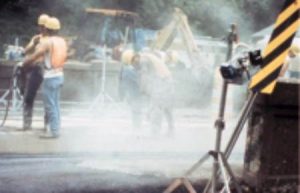 Silica exposure remains a serious threat to nearly 2 million U.S. workers, including more than 100,000 workers in high risk jobs such as abrasive blasting, foundry work, stonecutting, rock drilling, quarry work, and tunneling. The seriousness of the health hazards associated with silica exposure is demonstrated by the fatalities and disabling illnesses that continue to occur in sandblasters and rock drillers.
Silica exposure remains a serious threat to nearly 2 million U.S. workers, including more than 100,000 workers in high risk jobs such as abrasive blasting, foundry work, stonecutting, rock drilling, quarry work, and tunneling. The seriousness of the health hazards associated with silica exposure is demonstrated by the fatalities and disabling illnesses that continue to occur in sandblasters and rock drillers.
Crystalline silica has been classified as a human lung carcinogen. Additionally, breathing crystalline silica dust can cause silicosis, which in severe cases can be disabling, or even fatal.
Silica Controls:
- Use engineering controls such as local exhaust ventilation and blasting cabinets.
- Use protective equipment or other protective measures to reduce exposures below PEL.
- Use work practices controls, such as water sprays, when cutting bricks and blocks.
- Wear only N95 NIOSH certified respirators, if respiratory protection is required.
- Wear only a Type CE abrasive-blast supplied-air respirator for abrasive blasting.
- Shower if facilities are available and vacuum the dust from your clothes or change into clean clothing before leaving the worksite.
- Participate in training, exposure monitoring, and health screening and surveillance programs to monitor any adverse health effects caused by crystalline silica exposures.
- Do not eat, drink, apply cosmetics, or smoke in areas where crystalline silica dust is present.
There is no known cure for silicosis. If you are diagnosed with this disease it is likely you will eventually die from it. Working safe and preventing silica dust from entering your lungs is the only way to be sure you won’t develop this awful disease.
IF IT’S SILICA…IT’S NOT JUST DUST!!
Download flyer: STOTW_719_Dangers of Silica Dust Download Spanish flyer: STOTW_719_Dangers of Silica Dust_esp

